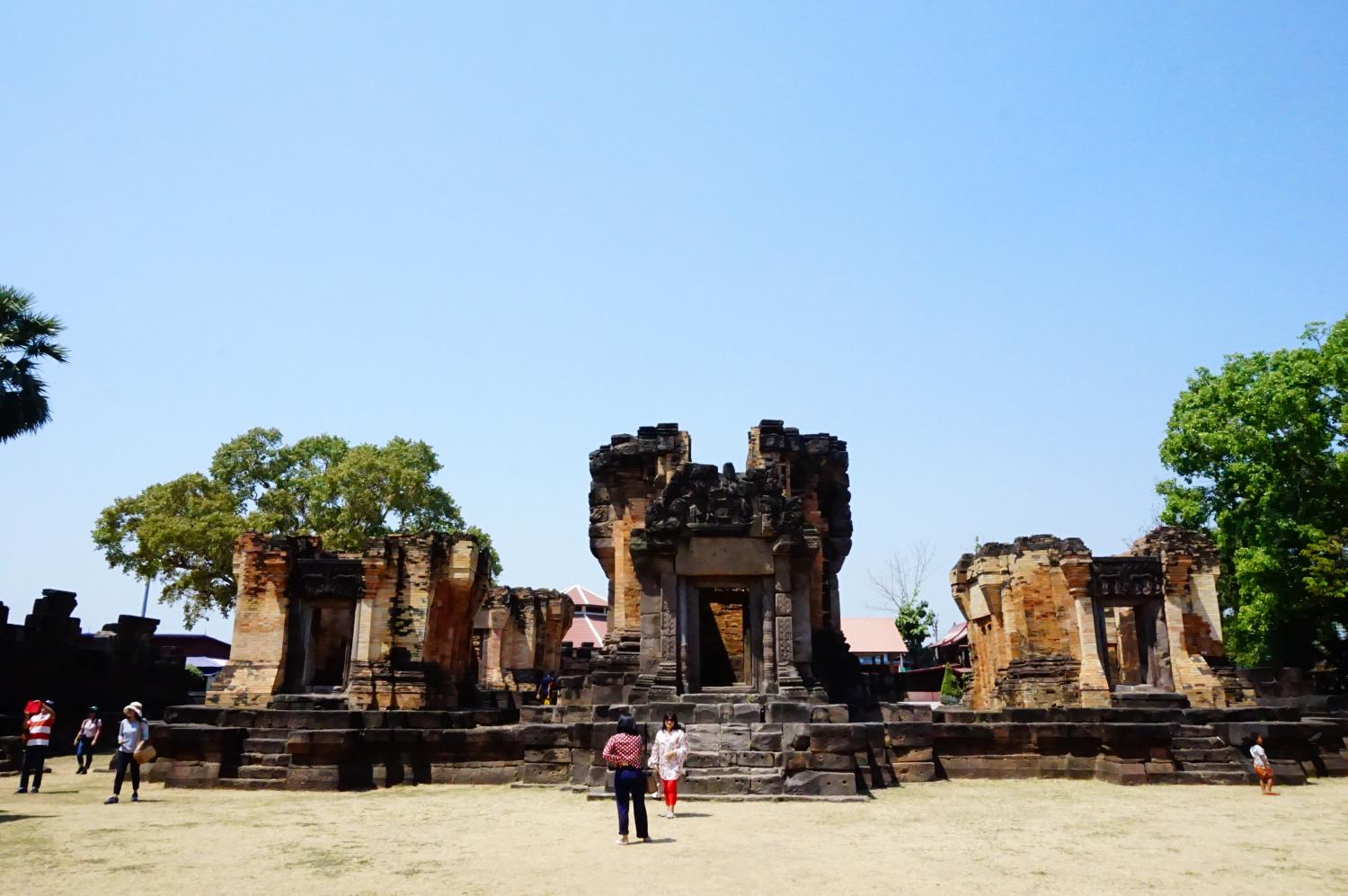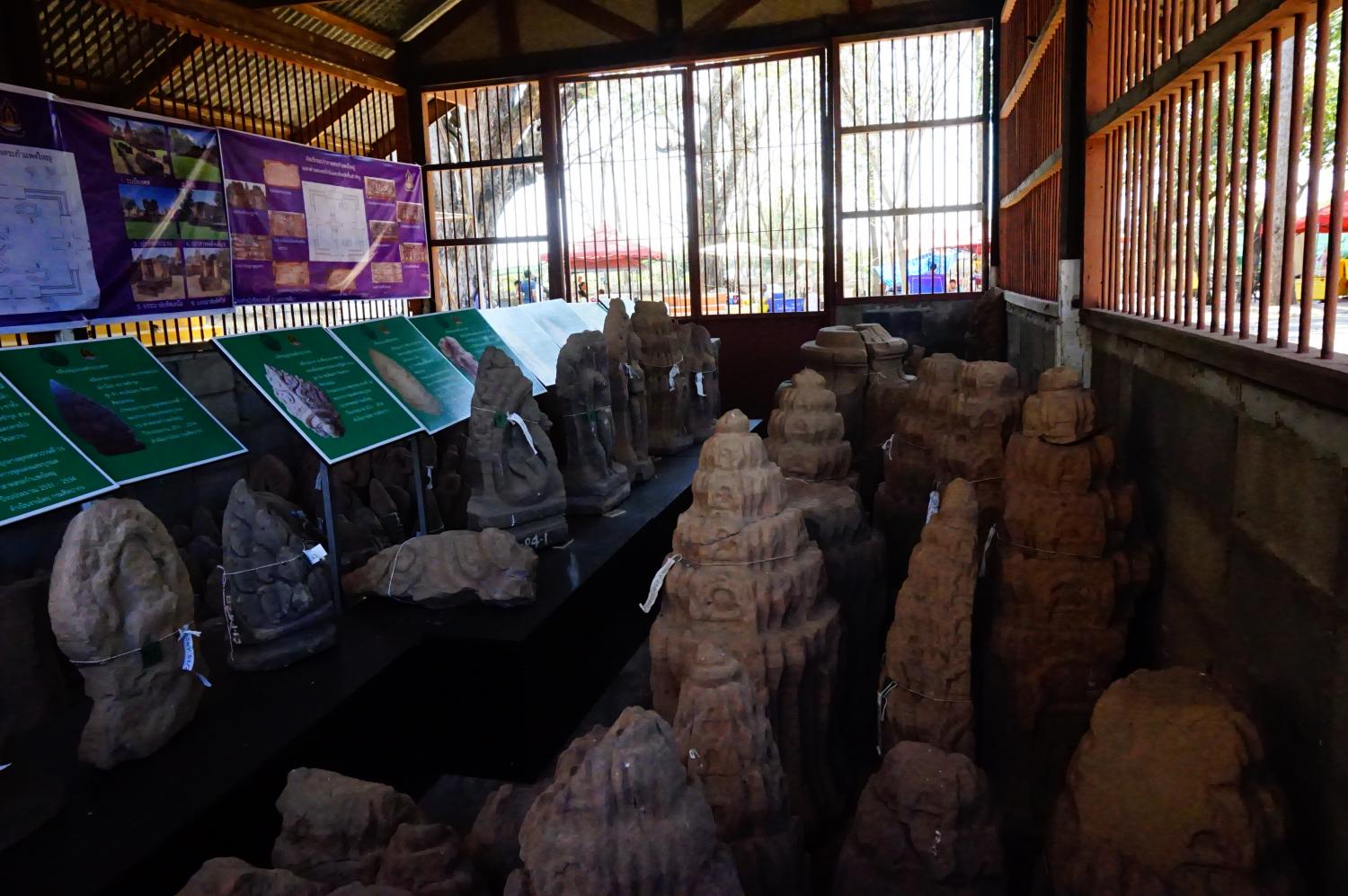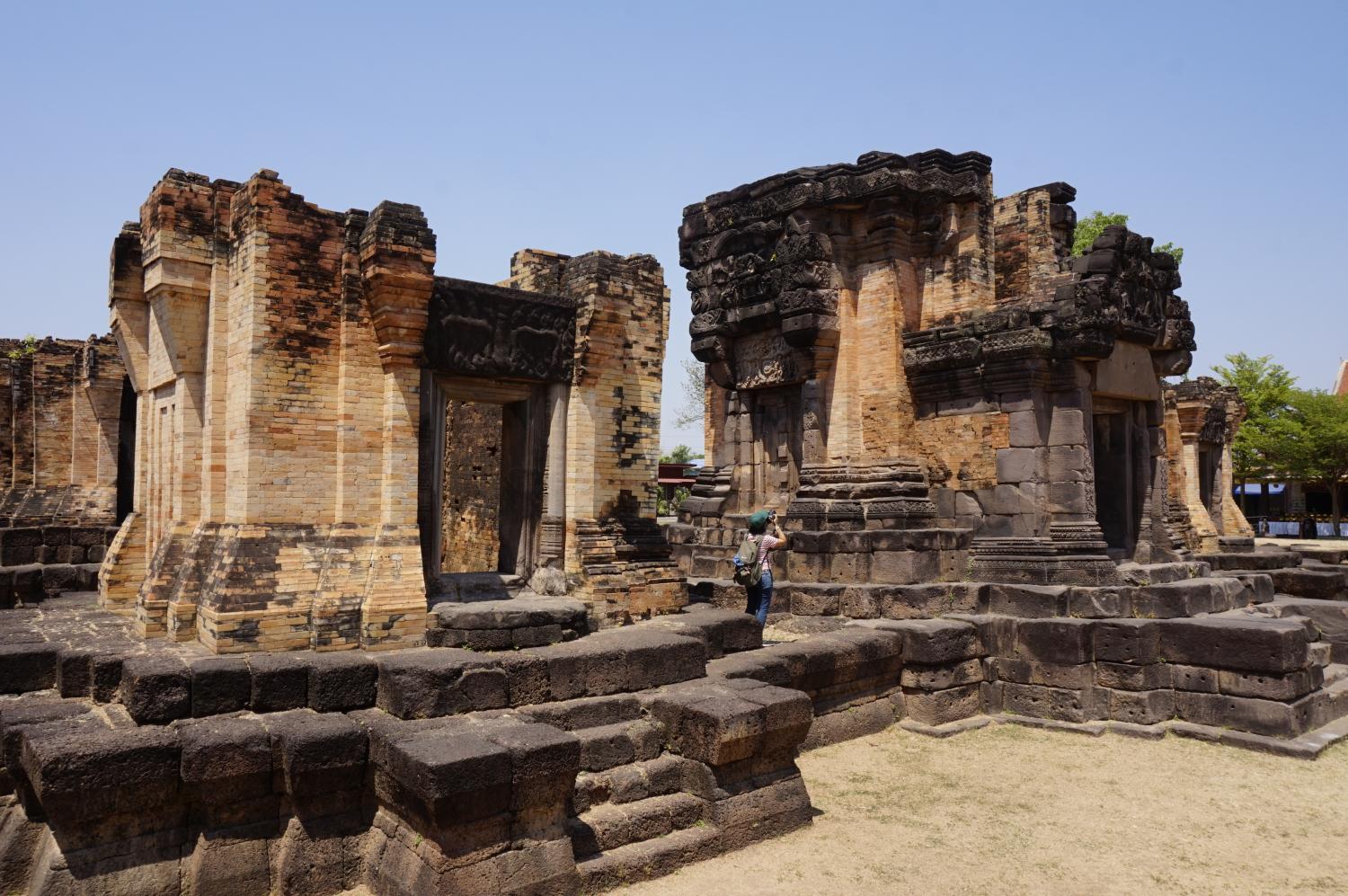As the summer heat in Surin rose, we made our way to Satom Organic Farm in Chom Phra district. It is located among vast organic fields temporarily covered with yellow sunn hemp in the post-harvest season. This farm belongs to Sutaen Sukjit, who abandoned office work in Bangkok and returned home with a commitment to sustainable living.

Satom Organic Farm offers a range of rice varieties, a homestay programme and rice wine tastings.



In the Kui language, satom means a broad plain alongside a river, so the farm's name alludes to how the northeastern town of Surin is rich in soil and water for agriculture. This is one of the reasons why the province has become an ethnic melting pot as well as a significant producer of high-quality jasmine rice.
Seeing organic rice and the health-conscious trend as an opportunity, Sutaen launched the organic farm in 2014 and spent two years improving soil quality and removing contaminants from his 7 rai plot of land dedicated to rice fields, vegetable plantations and a rice winery. He embraced his family's know-how to grow local rice, including red sticky rice, white jasmine rice, Surin black jasmine rice, komen Surin red jasmine rice, and tri-jasmine rice.
"I obtained seeds from the Surin Rice Research Center and focused on species that are not widely available in the market. Local rice is more familiar with the soil and surrounding environment, and it grows more easily than exotic rice from other areas. We could only produce 300kg of rice in the first year before increasing to 3 tonnes in the third year. Organic farming can generate increasing yields. It is not the same as using chemicals, so there will not be a reduction in output over time," he said.
"Local rice is robust, and fortunately, we never have insect issues. Following the basic crop rotation principle, I've planted sunn hemp after harvesting rice to add nutrients and improve the soil. We also established an organic rice community enterprise, which now includes five families and is linked with a network of four organic agricultural co-operatives in Surin."

Phra That Sri Nakhon Lamduan is home to Buddha's relics.
Ranging in price from 85-115 baht, best-selling rice varieties include pka um-ple rice, which has minimal sugar and looks like millet grains after cooking, and Surin black jasmine rice, which has free radicals and antioxidants and is a good source of vitamin B to relieve depression.
To promote local rice culture, Sutaen produces a series of authentic Thai rice wines in diverse flavours as well as unique fruity wines made from kalon mango under the Thai Sato label. Black Jasmine rice wine and Joodhi wine made from black sticky rice are also gaining popularity among visitors. He has also turned his farm into a learning centre, where guests can have an organic meal or take part in a creative farm stay programme, wine tasting, and lessons on how to produce Thai rice wine and herbal products.
After refuelling, we left the organic farm and continued on to Wat Pa Phai Charoen Samana Kit, which is situated in the Kanthararom district of Si Sa Ket.
Hemmed in by lush woods, this serene monastery is adjacent to an ancient marsh, which is said to be a naga habitat and once housed a monk's small cottage. In 2018, its terrain was transformed into a zen-style garden with Japanese, Chinese and Thai architectural elements, while a colossal naga-like statue of Phya Siri Kanthara Nakarat was erected to safeguard this holy land. The ground is painted blue with aquatic animals, creating the illusion that visitors are diving into an underwater world to pray for good fortune and commercial success.
A wood-and-marble vihan stands at the heart of the complex and is home to an astonishing statue of Phra Phuttharattana Wisutthathibodhi in royal costume, which was created by artisans of the Ten Crafts or Chang Sip Mu. To pray for a smooth life, visitors can sit in front of the Buddha statue and repeat the Itipiso chant 108 times.

Wat Pa Phai Charoen Samana Kit is becoming Si Sa Ket's new attraction for Buddhist pilgrims to worship Phya Siri Kanthara Nakarat.


The next morning, we travelled to the Ban Duan Yai community, where a parade of villagers in black traditional costumes escorted us to Bai Sri Su Kwan, a traditional greeting ritual said to bring guests luck, good health, protection and prosperity.
Coconut, khao tom mad (sticky rice with banana), boiled eggs, bananas and marigolds are examples of offerings that symbolise purity, riches and abundance. Simultaneously, a group of villagers performed the traditional dance ram sa-uen to heal the sick. Bananas, Thai-style white spirit, khao tom mad, kids' powder, Thai-scented water joss sticks, and candles were utilised to honour Phi Fah, a local god.
Then, we boarded a traditional e-tan truck for a sightseeing tour, beginning with the Phraya Kraipakdi Srinakarin Monument built to honour the city's first ruler. During the Ayutthaya period, this settlement was once known as Prasat Si Liam Khok Lamduan before becoming Muang Khu Khan in 1763.
Just a few metres away from the monument is Wat Duan Yai, which houses Phra That Sri Nakhon Lamduan, a Phra That Phanom-inspired structure with marbling. Inside, the ground floor is reserved for religious rituals and the 2nd floor is designed to be a museum, where visitors can view a wide collection of antiques, while the third floor is devoted to a teak replica of Phra That Sri Nakhon Lamduan, which is enshrined with Buddha's relics.

Once known as Muang Khu Khan, the ancient Ban Duan Yai community has managed to maintain its cultural heritage.



"In the past, this town was encircled by marshes and experienced a pandemic. As a result, Muang Khu Khan moved to the location that is now Khu Khan district and became Si Sa Ket province. The Phraya Kraipakdi Srinakarin Monument was built to honour the community's history and we gather here to pray for success in work and examinations. Additionally, there is a monument of the softshell turtle Phaya Ra-ngom, at which locals once launched rockets in an effort to induce rain," said village chief Sabithip Boonpluk.
As a consequence of sustainable tourism trends, Sabithip and her neighbours have converted their traditional suay-style homes into quaint lodges, allowing guests to experience a slower pace of life and local culture, making it the perfect getaway from chaotic crowds.
The Nakhon Lamduan Homestay Tourism Community Enterprise was established in 2016 to provide a homestay programme, handicraft workshops, cultural performances and regional food. It now includes 95 families and is accredited by the Asean Homestay Standards. Prices for accommodation with a fan or air conditioner and a meal start at 350 baht per person.
"At the moment, 13 families house guests in a homestay programme. We reimagined the design of our homes to include a living room, bedrooms and bathrooms so that visitors can remain in comfort and solitude. Through engaging workshops, they can learn about our culture while creating traditional black blouses with beautiful embroidery or hairpins and brooches adorned with white cheesewood. This is a way to increase income after harvesting the region's main economic crops of rice, garlic and shallots," Sabithip said.

The Phraya Kraipakdi Srinakarin Monument stands at the heart of the Ban Duan Yai village.
For lunch, we were energised by nutritious local delicacies like fried insects and kob yad sai (stuffed frogs), which were served with ma noi sauce prepared from Cyclea barbata, which can help lower sugar and cholesterol, alleviate aphthous ulcers and treat fever.
In the afternoon, we ended our journey to Wat Sa Kamphaeng Yai in the Uthumphon Phisai district, where we explored ancient Khmer-style ruins that were built as a Hindu sanctuary during the time of King Jayavarman I.
It features five historical pagodas made of laterite and embellished with mural sculptures portraying Hindu deities and mystical animals. The main building, which represents Mount Meru, is in the centre of the compound.
Following King Jayavarman VII's conversion to Buddhism, a new vihan was constructed alongside the sacred 1,000-year-old Buddha in meditation posture on the naga's tail. In the adjacent pavilion, visitors may catch a glimpse of timeworn Buddha statues and other items discovered in the temple.

The ruins of Prasat Sa Kamphaeng Yai, constructed during the reign of King Jayavarman I.


Travel info
- Satom Organic Farm is at 174, Chom Phra district, Surin. For more details, call 061-165-1848 or visit satomfarm.com.
- The Ban Duan Yai is in Wang Hin district, Si Sa Ket. For more details, call 095-571-5548 or visit the Homestay Nakhon Lamduan page (in Thai) on Facebook.
